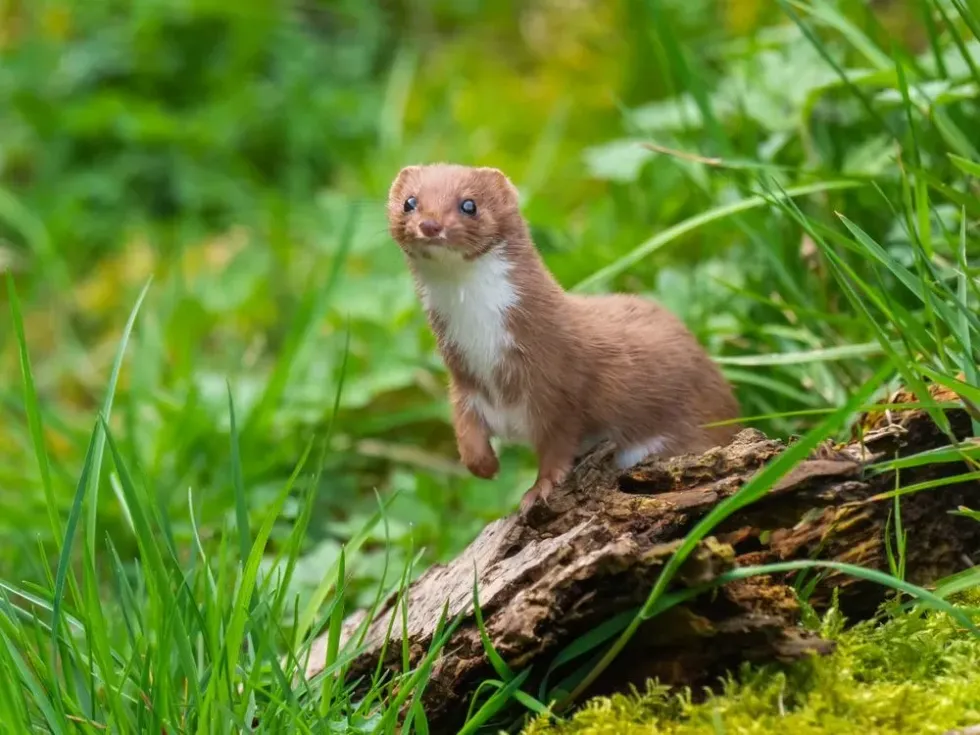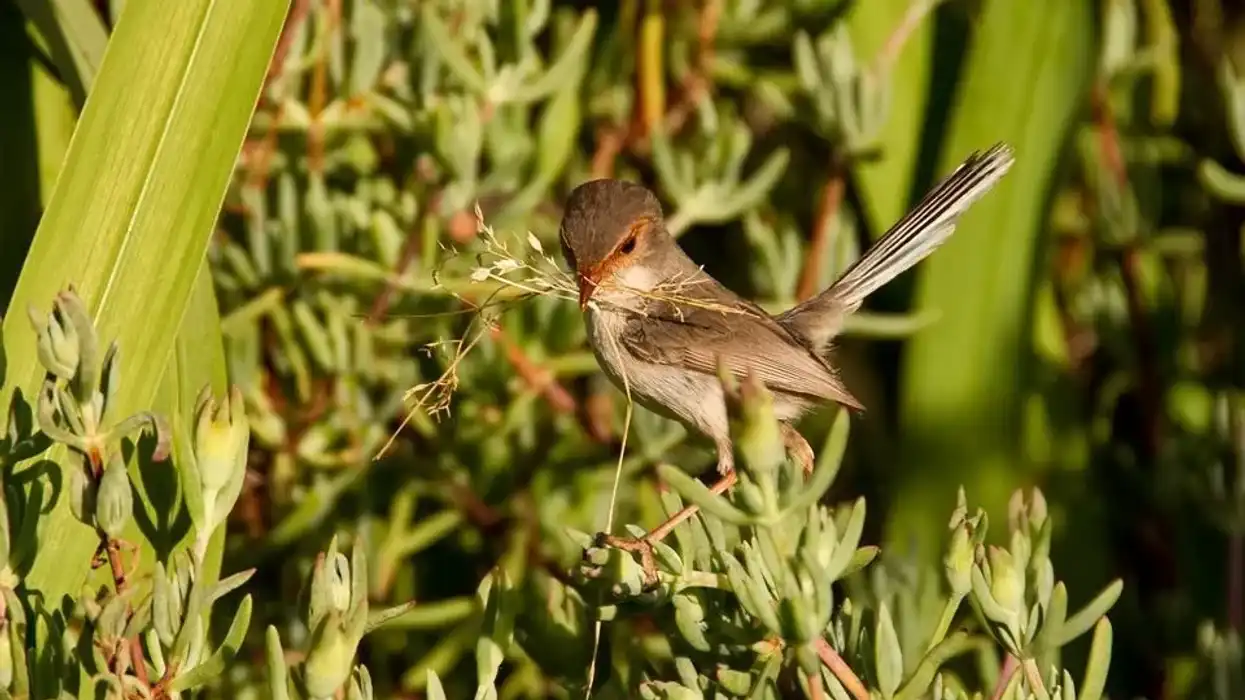Sneaky and conniving, barbaric and treacherous, this is how weasels are portrayed in many Hollywood movies. But the fact is that they are also brilliant and interesting creatures. They are used as a pest controller in some countries. Let us take a closer look at one of the species of weasels, the yellow-bellied weasel.
The yellow-bellied weasel range is in the pine forests of Southern China, India, Laos, Nepal, Northern Thailand (Thai National Parks), Southeast Asia, and Vietnam, etc. They got their name after its striking yellow-colored underbelly.
Mustela kathiah are mammals of the Mustelidae family, with excellent visibility, listening ability, and sense of smell. They are fearless and versatile predators specializing in attacking animals larger than themselves. These species create separate pockets in their dens to store their meat and eat them during winter when it is difficult to hunt.
If you love to read about similar species, check our other articles on long-tailed weasel facts and mountain weasel facts.
Yellow-Bellied Weasel Interesting Facts
What type of animal is a yellow-bellied weasel?
A yellow-bellied weasel ( Mustela kathiah) is a weasel that lives in pine forests. They are small, slender, carnivorous animals from the Mustelidae family with long bodies and short little legs.
What class of animal does a yellow-bellied weasel belong to?
Yellow-bellied weasels are mammals. They belong to the Animalia kingdom, the Mammalia class in the family of Mustelidae. Other subspecies of the yellow-bellied weasel family are Mustela kathiah caporiaccoi and Mustela kathiah kathiah.
How many yellow-bellied weasels are there in the world?
Mustela kathiah is widespread throughout its range, but an overall population estimate is not available.
Where does a yellow-bellied weasel live?
Yellow-bellied weasels are found in pine forests in south-east Asian countries like Pakistan, Nepal, China, India, Laos, Burma, Bhutan, Vietnam, and Thailand. They are mainly found in forests with an elevation between 3280 - 6562 ft (1000 to 2000 m). During winters, they move to a lower altitude of around 2625 - 3280 ft (800 - 1000 m).
What is a yellow-bellied weasel's habitat?
A yellow-bellied weasel (Mustela kathiah) is typically a nocturnal and hill dwelling species, which is active at night and sleeps during the day in a hole in the ground or below rocks and wood logs. Due to its inaccessible habitat, not much is known about its ecology.
Who do yellow-bellied weasels live with?
Yellow-bellied weasels from the Mustelidae family are solitary creatures and don’t tend to live with a pack except for breeding. They hunt and roam by themselves. A group of yellow-bellied weasels is called a boggle.
How long does a yellow-bellied weasel live?
The yellow-bellied weasels will probably live for up to eight years in captivity. In the wild, they are likely to live several more years.
How do they reproduce?
Reproduction for these mammals occurs annually during the spring-summer time. First, males will build a den and then mate with the females.
Then, the females are in pregnancy for 10 months and give birth to a litter of up to 18 kits. Male yellow-bellied weasels first attain sexual maturity after the age of one year, while females mature in their first summer.
Females will also take care of kits in the den for eight weeks until they are ready to hunt by themselves.
What is their conservation status?
As per the IUCN Red List, the conservation status of the yellow-bellied weasel (Mustela kathiah) is of Least Concern.
Yellow-Bellied Weasel Fun Facts
What do yellow-bellied weasels look like?

Yellow-bellied weasel characteristics are unique and useful to differentiate them from other weasel species. Their upper body from head to tail is chocolate brown in color, while the underbelly is yellow.
The upper and lower lip, chin, and throat are in lighter yellow color. The entire body is covered in light fur, and their footpads are well built and exposed. An interesting aspect of the Mustela kathiah is that its tail length is more than half of its body length.
How cute are they?
The yellow-bellied weasels might look cute with dark brown fur and yellow-colored underbelly, but they are known to be aggressive.
How do they communicate?
They make a variety of sounds like trills and low whistles for friendly greetings. A loud, high-pitched squeaking, or hiss when they sense a threat.
How big is a yellow-bellied weasel?
The Yellow-bellied weasel (Mustela kathiah) is a long, sleek weasel species that are 9-11 in (25 - 27 cm) long with a tail around half the length of the body ranging between 4.9-5.9 in (12.5 - 15 cm).
This species is bigger than the least weasel, which according to Animal Diversity Web (ADW), is the smallest carnivore in the world, weighing only 1 lb (250 g), and can grow a maximum length of 4-10 in (11-26 cm).
How fast can a yellow-bellied weasel run?
The exact speed of this particular species is unclear. However, the weasel is known to be a super-fast animal and can speed up to 15 mph (25 kph).
How much does a yellow-bellied weasel weigh?
A yellow-bellied weasel species is very sleek and weighs around 3.3 lb (1.5 kg) on average.
What are the male and female names of the species?
Though there is no specific name for female and male yellow-bellied weasel, in general, a male weasel is called a buck, hob, or jack, and the females are called jill or doe.
What would you call a baby yellow-bellied weasel?
A baby yellow-bellied weasel is called a kit. At birth, the kit is blind and helpless. However, it grows up within eight weeks of age and will then live on its own.
What do they eat?
This species belonging to the Mustelidae family of the Animalia kingdom are carnivores. The Yellow-bellied weasels eat rodents like mice, voles, rats, and other small mammals and birds.
These species have a high metabolism, and to maintain it, they need to consume at least half of their body weight daily. They have an elongated body and short legs with footpads that are suitable for attacking their prey, even in very narrow passages.
Are they poisonous?
Yellow-bellied weasels are not poisonous but are very aggressive hunters. They kill their prey by biting on their necks. This species hunting strategy involves cornering their prey, wrapping their body around the animal to immobilize them, and giving a single killing bite.
Would they make a good pet?
These species are kept as pets in countries like Nepal and India, mainly to hunt rodents and save food and fodder in their farms. They are often kept as pets for their hunting skills.
Did you know...
Instead of making their own nest, the species may sometimes take over the burrows made by other rodents and even termite hills.
The species is seen killing and carrying off animals that are even ten times bigger than their sizes, such as goats and sheep.
They are members of the same family (Mustelidae) as wolverines, badgers, and otters.
Do weasels kill for fun?
Yellow-bellied weasels from the Mustelidae family are considered to be aggressive predators. These species are known to kill more than needed and stash them separately for later consumption.
Many researchers have observed them performing a war dance like spinning, jumping, and twisting after cornering their prey, and sometimes they just dance to have some fun.
Are weasels good to have around?
Yellow-bellied weasels are known to play their role in the ecological balance. They can be easily tamed by humans and used for controlling rodents in human settlements.
In Nepal, they are trained to attack larger animals like goats and sheep and bigger birds like geese. However, they are not a threat to humans as long as their habitats and ecosystem are not occupied.
Here at Kidadl, we have carefully created lots of interesting family-friendly animal facts for everyone to discover! Learn more about some other mammals from our European rabbit facts and eastern cottontail facts pages.
You can even occupy yourself at home by coloring in one of our free printable Yellow-bellied weasel coloring pages.
*Please note that this is an image of a least weasel, not a yellow-bellied weasel. If you have an image of a yellow-bellied weasel, please let us know at hello@kidadl.com









